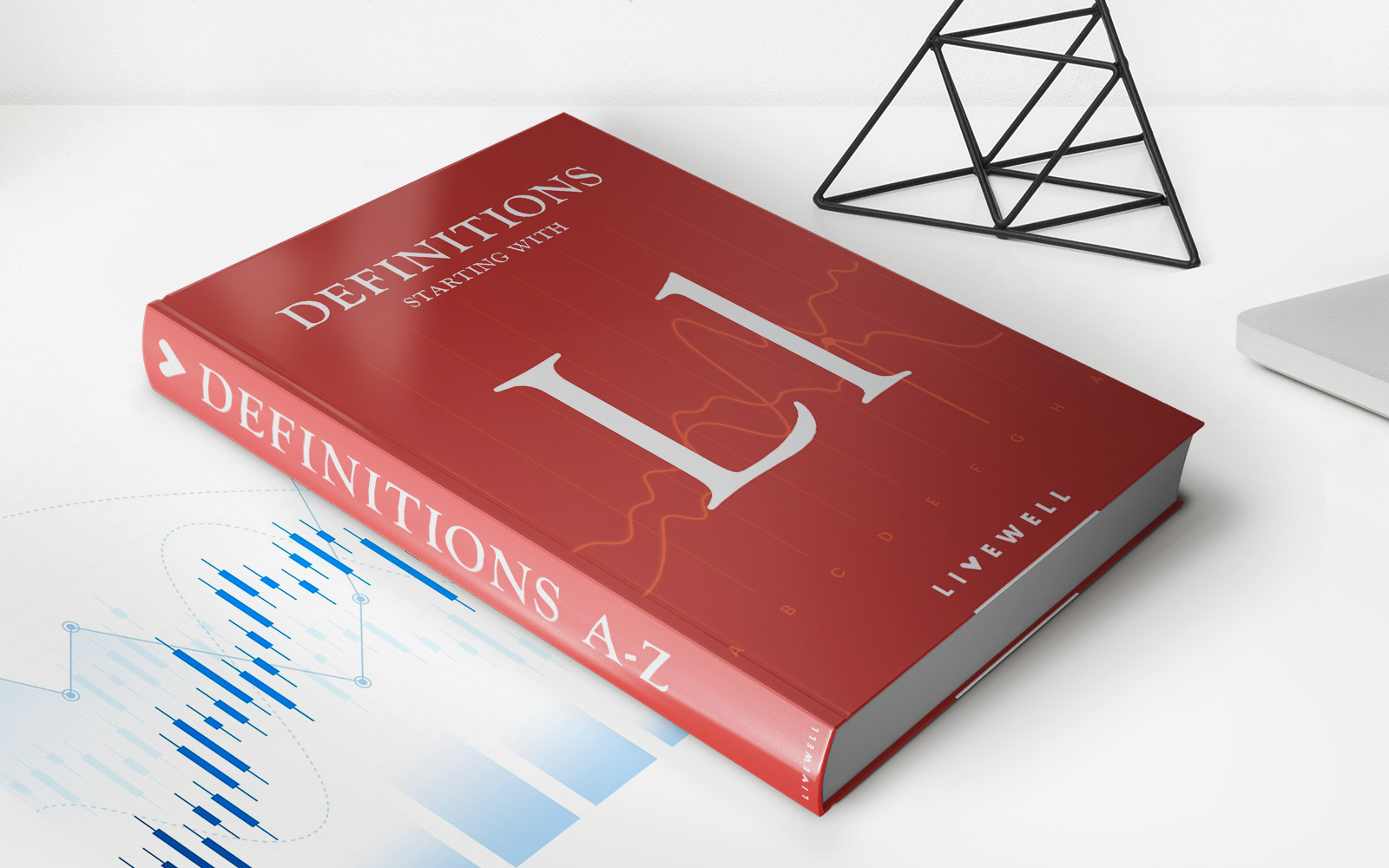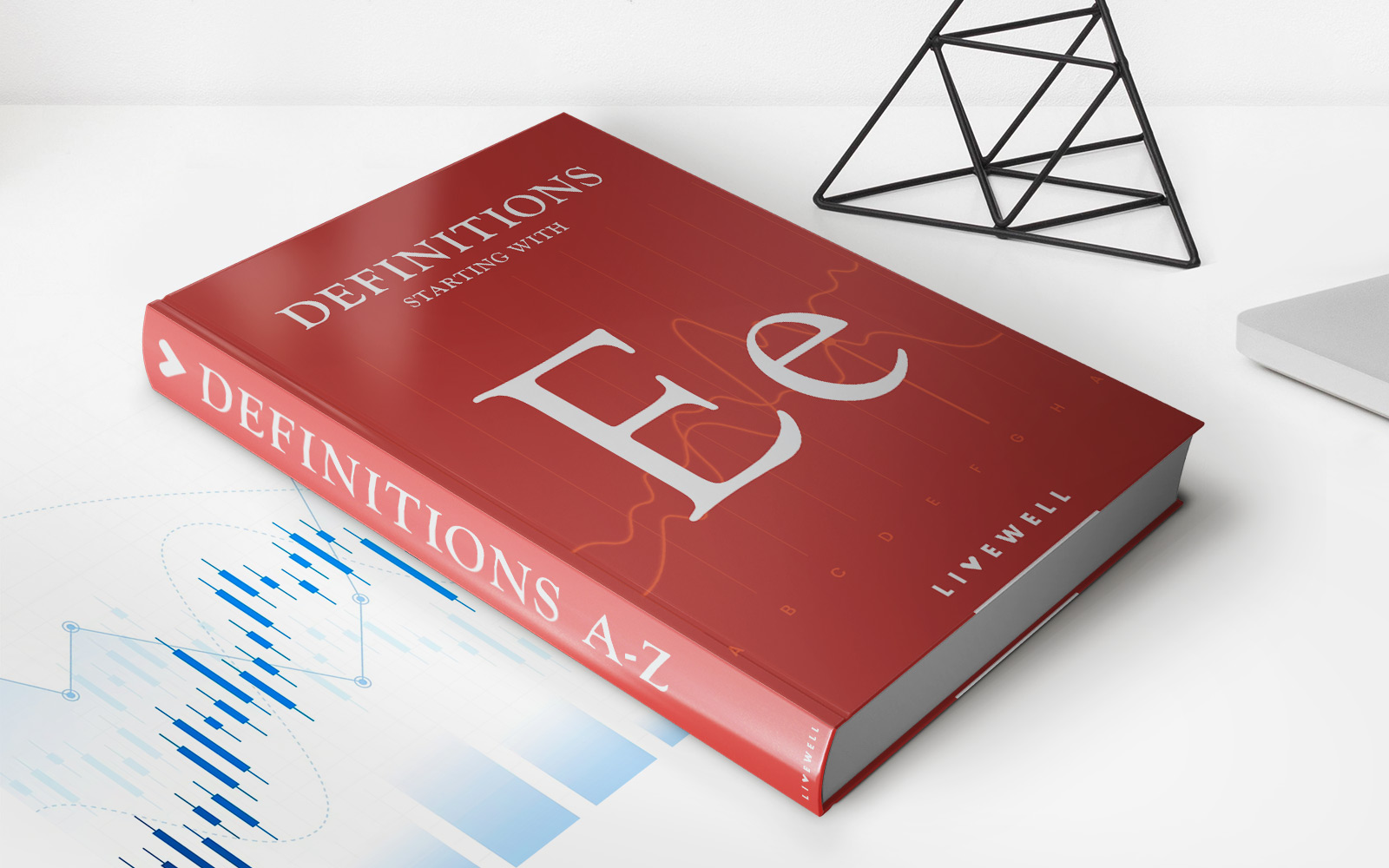Home>Finance>How I Made One Million Dollars Last Year Trading Commodities


Finance
How I Made One Million Dollars Last Year Trading Commodities
Published: October 27, 2023
Learn the strategies and techniques I used to earn an impressive one million dollars in trading commodities last year. Gain insights into the world of finance and start your own successful journey.
(Many of the links in this article redirect to a specific reviewed product. Your purchase of these products through affiliate links helps to generate commission for LiveWell, at no extra cost. Learn more)
Table of Contents
- Introduction
- Setting Financial Goals
- Choosing the Right Commodities to Trade
- Developing a Reliable Trading Strategy
- Managing Risk and Maximizing Profits
- Implementing Effective Money Management Techniques
- Utilizing Technical Analysis in Commodity Trading
- Monitoring Market Trends and News Events
- Overcoming Challenges and Setbacks in Commodity Trading
- Conclusion
Introduction
Welcome to the exciting world of commodity trading, where fortunes can be made and lost in the blink of an eye. In this article, we will take a closer look at how I managed to make one million dollars trading commodities last year. But before diving into the specifics, it is important to understand the fundamentals of this volatile market.
Commodity trading involves buying and selling raw materials or primary products, such as gold, oil, natural gas, or agricultural products, to name a few. These commodities are traded on various exchanges worldwide, providing investors with opportunities to profit from price fluctuations.
While commodity trading offers immense potential for financial gain, it is not without its risks. The market is influenced by various factors, including geopolitical events, supply and demand dynamics, and global economic trends. Understanding these factors and their impacts is critical to successful trading.
Trading commodities requires a combination of research, analysis, and a deep understanding of market trends. It is not for the faint of heart, as it demands discipline, patience, and the ability to handle stress and uncertainty. But with the right approach and strategies, substantial profits can be achieved.
Before embarking on my journey as a commodities trader, I set clear financial goals. I wanted to leverage the opportunities presented by the commodities market to generate substantial returns and build long-term wealth. These goals served as a guiding light throughout my trading journey and helped me stay focused even during the most challenging times.
In the following sections, we will delve deeper into the steps I took to achieve my financial goals. From selecting the right commodities to trade to developing a reliable trading strategy, we will explore the essential elements that contributed to my success. So let’s get started and discover how I made one million dollars trading commodities last year.
Setting Financial Goals
When it comes to commodity trading or any form of financial investment, setting clear and realistic goals is paramount. Without a clear direction, it’s easy to get lost in the vast and fast-paced world of trading. As a commodities trader, I knew that I needed a roadmap to steer me towards success.
The first step I took was to define my financial goals. I assessed my financial situation, considered my risk tolerance, and outlined what I wanted to achieve through commodity trading. It’s essential to establish both short-term and long-term goals to keep you motivated and focused.
My short-term goal was to generate consistent profits on a monthly basis, while my long-term goal was to accumulate one million dollars within a year. These goals were ambitious but achievable if I managed my trades effectively and adhered to a well-researched trading strategy.
Setting specific, measurable, attainable, relevant, and time-bound (SMART) goals helped me stay on track and gauge my progress along the way. It gave me a clear framework to work within and enabled me to stay disciplined and motivated during periods of market volatility.
I also made sure to regularly review and adjust my goals as needed. The commodities market is ever-changing, and it’s important to be flexible and adapt to new market conditions. By regularly reassessing my objectives, I could make necessary adjustments to my trading strategy and ensure that I was always aligned with the current market trends.
Moreover, I set realistic expectations for myself. I knew that commodity trading was not a get-rich-quick scheme, but rather a long-term journey to financial growth. I understood that there would be ups and downs along the way, and I needed to be prepared to weather any storms that came my way.
By setting clear financial goals and maintaining a realistic mindset, I was able to approach commodity trading with a clear and focused mindset. It provided the foundation for my success and guided every decision I made as a trader.
Choosing the Right Commodities to Trade
One of the crucial steps in achieving success in commodity trading is selecting the right commodities to trade. With a vast array of commodities available for trading, it is essential to focus on those that align with your trading strategy and offer the most potential for profit.
Before diving into the market, I conducted thorough research to identify the commodities that were in high demand and had a history of strong price movements. This analysis helped me understand the supply and demand dynamics that drove the prices of different commodities.
I also took into consideration my own knowledge and expertise in a particular commodity. It is crucial to trade commodities that you understand well. This familiarity allows you to make informed decisions and assess market trends more accurately.
Diversification is another key aspect when choosing commodities to trade. Instead of focusing solely on one commodity, I spread my investments across multiple commodities. This approach helped to mitigate risks and ensured that I did not rely solely on the performance of a single asset.
The availability of market information also played a vital role in my decision-making process. I made use of financial news platforms, research reports, and industry publications to stay up to date with the latest market trends and news events. This allowed me to make well-informed trading decisions based on factual data.
Furthermore, I evaluated the liquidity and volatility of the commodities I considered trading. Liquidity refers to the ease with which a commodity can be bought or sold without significantly impacting its price. Volatility, on the other hand, refers to the price fluctuations that a commodity experiences. I sought commodities that offered sufficient liquidity while still providing opportunities for significant price movements.
Lastly, I carefully assessed the trading costs associated with each commodity. Different commodities have varying levels of transaction costs, such as commissions and fees. It was essential for me to factor these costs into my overall trading strategy, as they can significantly impact profitability.
Choosing the right commodities to trade is a decision that should not be taken lightly. It requires a combination of research, market analysis, and consideration of personal knowledge and risk tolerance. By selecting the right commodities, I set myself up for success and positioned myself to take advantage of favorable market conditions.
Developing a Reliable Trading Strategy
A reliable trading strategy is the backbone of successful commodity trading. It provides a structured approach to decision-making and helps navigate the complexities of the market. Developing a robust strategy was crucial in my journey towards making one million dollars trading commodities.
First and foremost, I determined my trading style and methodology. There are various trading styles, such as day trading, swing trading, or position trading, each with its own set of advantages and considerations. I chose a combination of swing trading and position trading, as it aligned well with my risk tolerance and allowed me to capitalize on medium to long-term price movements without being tied to the computer screen constantly.
A solid trading strategy involves a thorough analysis of both technical and fundamental factors. Technical analysis involves studying historical price patterns, chart patterns, and utilizing various technical indicators to identify potential entry and exit points. On the other hand, fundamental analysis focuses on analyzing supply and demand factors, economic data, geopolitical events, and their impact on commodity prices.
I combined both approaches by using technical analysis to identify key levels of support and resistance, trend lines, and momentum indicators. This helped me time my entries and exits more effectively. Additionally, I considered fundamental factors such as global economic trends, seasonal trends for specific commodities, and geopolitical factors to gain a comprehensive understanding of the market forces at play.
Risk management played a crucial role in my trading strategy. I established clear risk parameters and implemented stop-loss orders to limit potential losses. I never risked more than a certain percentage of my trading capital on any single trade, ensuring that one bad trade would not wipe out my entire account. This disciplined approach to risk management helped preserve my capital and protect against catastrophic losses.
I also employed position sizing techniques to determine the appropriate amount of capital to allocate to each trade. By analyzing the potential risk and reward of each trade, I could allocate the appropriate capital to maximize profit potential while minimizing the risk of overexposure.
Consistency was another key aspect of my trading strategy. I followed a set of predefined rules and guidelines and avoided making impulsive or emotional decisions. Emotions can cloud judgment and lead to irrational trading decisions. By maintaining a disciplined and consistent approach, I was able to minimize costly mistakes and maintain a clear focus on my objectives.
Developing a reliable trading strategy takes time, research, and experience. It requires continuous evaluation and adjustments as market conditions evolve. By combining technical and fundamental analysis, implementing effective risk management techniques, and maintaining consistency, I developed a strategy that helped me navigate the volatile commodities market and achieve my financial goals.
Managing Risk and Maximizing Profits
Risk management is a critical component of successful commodity trading. To ensure long-term profitability and protect capital, I implemented various risk management techniques while also focusing on maximizing profits. Here’s how I managed risk and maximized profits in my commodity trading endeavors.
One of the key risk management strategies I employed was diversification. Instead of putting all my capital into a single trade or a specific commodity, I spread my investments across multiple trades and different commodities. This reduced the potential impact of a single trade going wrong and helped me capture opportunities in various markets.
In addition to diversification, I established a maximum risk per trade. I determined a specific percentage of my trading capital that I was willing to risk on any given trade. This allowed me to control the downside and minimize the potential impact of a losing trade on my overall portfolio. By adhering to this rule, I ensured that no single trade could wipe out a significant portion of my capital.
Furthermore, I implemented stop-loss orders for every trade. A stop-loss order automatically closes a trade if the price reaches a predetermined level, limiting potential losses. This helped me manage risk and provided a safety net in case the market moved against my position. Additionally, I regularly reviewed and adjusted stop-loss levels as the market conditions changed to protect profits and limit downside risk.
Another risk management technique I utilized was position sizing. By calculating the appropriate position size based on the potential risk and reward of each trade, I ensured that I allocated a suitable amount of capital to each opportunity. This allowed me to maximize profit potential while still maintaining proper risk management. I avoided trading overly large positions that could expose me to unnecessary risk.
While risk management is vital, maximizing profits is equally important. I focused on taking advantage of favorable market conditions and aligning with the trend in the commodities I traded. Instead of trying to predict market movements, I followed the price action and adjusted my positions accordingly. This approach helped me capture larger profits during sustained market trends.
Moreover, I regularly reviewed and analyzed my trades to identify patterns and opportunities for improvement. I kept a trading journal to record the reasons behind each trade, the outcomes, and the lessons learned. This allowed me to fine-tune my strategies and eliminate any recurring mistakes, which ultimately contributed to maximizing my profits.
Lastly, staying updated with market news and trends played a crucial role in managing risk and maximizing profits. I closely monitored market developments, economic indicators, and geopolitical events that could impact commodity prices. By staying informed, I could make informed trading decisions and position myself to take advantage of potential opportunities.
Managing risk and maximizing profits go hand in hand in commodity trading. By implementing effective risk management techniques, establishing clear exit strategies, and staying informed of market trends, I was able to protect my capital and optimize my profits in the exciting and volatile world of commodity trading.
Implementing Effective Money Management Techniques
Effective money management is a crucial aspect of achieving long-term success in commodity trading. It involves making wise decisions regarding how much capital to allocate to each trade, managing trading costs, and ensuring the longevity of your trading account. Implementing effective money management techniques has played a significant role in my journey towards making one million dollars trading commodities.
One of the key principles of money management is determining the appropriate position size for each trade. I calculated the position size based on the risk-reward ratio and the percentage of my capital I was willing to risk on that particular trade. By properly sizing my positions, I ensured that I was not overexposed to any single trade and that my risk was within manageable limits.
In addition to position sizing, I closely monitored and controlled trading costs. High transaction costs can eat into profits, so I sought brokerage platforms with competitive commission rates and low fees. I also avoided excessive trading, focusing on quality trades rather than attempting to capture every small market movement. This minimized trading costs and allowed me to maximize profits.
Setting realistic profit targets and sticking to them was another important money management technique. Rather than chasing unrealistic gains, I set achievable profit targets for each trade based on market conditions and the potential risk-reward ratio. Once I reached my profit target, I closed the trade, ensuring that I locked in my profits rather than gambling on uncertain market movements.
I also implemented trailing stop orders to protect profits and prevent unnecessary losses. As a trade moved in my favor, I adjusted the stop-loss level to lock in profits and reduce risk. This allowed me to let winners run while still protecting against a potential reversal in the market.
Furthermore, keeping a sufficient amount of trading capital is vital for long-term success. I never risked a significant portion of my trading capital on any single trade, ensuring that I had enough reserve capital to handle any adverse market conditions. By maintaining a reserve, I had the flexibility to seize new opportunities and manage unforeseen risks effectively.
Implementing effective money management techniques also involves regularly evaluating and adjusting your approach. I reviewed my trading performance regularly, identifying areas for improvement and adjusting my strategies accordingly. This allowed me to adapt to evolving market conditions and fine-tune my money management techniques as needed.
Lastly, cultivating discipline and emotional control is essential for effective money management. Emotions, such as fear and greed, can cloud judgment and lead to impulsive decisions. I stuck to my trading plan, followed my predefined risk parameters, and avoided making emotional decisions. This ensured that I made rational choices based on sound money management principles.
Implementing effective money management techniques is crucial for long-term success in commodity trading. By properly sizing positions, managing trading costs, setting realistic profit targets, and maintaining an appropriate level of capital, you can safeguard your trading account and maximize your potential for profitable trades.
Utilizing Technical Analysis in Commodity Trading
Technical analysis is a powerful tool that I utilized extensively in commodity trading to identify potential market trends and make informed trading decisions. By analyzing historical price patterns, chart patterns, and various technical indicators, I was able to gain valuable insights into the movement of commodity prices.
One of the primary aspects of technical analysis is studying historical price patterns. By examining past price movements, I identified recurring patterns that provided indications of potential future price movements. These patterns, such as head and shoulders, double tops and bottoms, and trend lines, allowed me to anticipate possible reversals or trend continuations in the market.
Chart patterns were another important element of technical analysis. These patterns, formed by the price action on a chart, helped me to identify potential entry and exit points. Whether it was a bullish flag, a descending triangle, or a cup and handle pattern, chart patterns provided visual cues that guided my trading decisions.
Technical indicators played a crucial role in my analysis as well. These mathematical calculations applied to price and volume data provided additional insights into market trends and potential reversals. Indicators such as moving averages, relative strength index (RSI), and MACD (moving average convergence divergence) helped me identify overbought or oversold conditions, confirm trend strength, and spot potential entry or exit opportunities.
Recognizing support and resistance levels was another key aspect of technical analysis. Support levels act as price floors where buying pressure typically outweighs selling pressure, causing prices to bounce back. Resistance levels, on the other hand, act as price ceilings where selling pressure typically outweighs buying pressure, causing prices to reverse. Identifying these levels allowed me to plan my trades, set appropriate stop-loss levels, and target potential profit areas.
Utilizing technical analysis also involved monitoring momentum indicators. These indicators help gauge the speed and strength of price movements, providing insights into the potential continuation or reversal of a trend. By assessing momentum, I could determine whether a particular commodity was overextended or still had room to run before a potential pullback.
However, it’s important to note that technical analysis is not foolproof. While it provides valuable insights, it is not a crystal ball that can predict future price movements with certainty. It requires a combination of experience, knowledge, and the ability to analyze multiple indicators and patterns to increase the probability of making profitable trades.
To further enhance my technical analysis, I combined it with fundamental analysis. While technical analysis focuses on price movements, fundamental analysis considers the underlying factors, such as supply and demand dynamics, economic data, and geopolitical events that influence commodity prices. By combining both approaches, I gained a more holistic view of the market and made more informed trading decisions.
Utilizing technical analysis effectively in commodity trading requires continuous learning and practice. It involves staying updated with the latest chart patterns, technical indicators, and market trends. By honing my technical analysis skills, I was able to identify profitable trading opportunities and improve my overall trading performance.
Monitoring Market Trends and News Events
Keeping a close eye on market trends and staying informed about significant news events is vital for success in commodity trading. The commodities market is influenced by various factors, including economic indicators, geopolitical events, and supply and demand dynamics. By monitoring these trends and news events, I was able to make better-informed trading decisions and capitalize on potential opportunities.
Firstly, I stayed up to date with economic indicators that directly or indirectly impacted the commodities I traded. Factors such as GDP growth rates, inflation rates, interest rates, and unemployment data had a significant impact on commodity prices. By monitoring these indicators, I gained insights into the overall health of the economy and anticipated potential price movements in related commodities.
I also paid close attention to geopolitical events and their potential impact on commodity prices. For example, political unrest in oil-producing regions could disrupt supply and impact oil prices. Trade disputes between nations could affect agricultural commodities. By staying aware of geopolitical developments, I could anticipate potential market reactions and adjust my trading strategy accordingly.
Supply and demand dynamics played a crucial role in commodity trading. I closely monitored reports and data on production levels, inventory levels, and consumption patterns to gauge the supply-demand balance for specific commodities. This information helped me identify potential shifts in price trends and anticipate market movements.
Market sentiment and investor behavior also influenced commodity prices. I observed market trends and sentiment by analyzing price movements, volume patterns, and sentiment indicators. This allowed me to gauge the overall market sentiment and make trading decisions based on the prevailing mood in the market.
News events, both scheduled and unexpected, had a profound impact on commodity prices. In addition to economic indicators and geopolitical events, I followed news related to weather patterns, natural disasters, government policies, and industry-specific developments. By staying aware of these events, I could anticipate potential price fluctuations and capitalize on trading opportunities.
To stay updated on market trends and news events, I utilized various resources. Financial news platforms, industry publications, and reputable websites provided valuable information and real-time updates. I also made use of economic calendars to track scheduled announcements and reports that could impact commodity prices.
However, it’s important to remember that not all news events and trends have an immediate or direct impact on commodity prices. Market reactions can be complex and influenced by a range of factors. Therefore, I combined my analysis of market trends and news events with technical analysis and fundamental analysis to make well-rounded trading decisions.
Monitoring market trends and staying informed about news events allowed me to grasp the bigger picture and make more informed trading decisions. By understanding the factors influencing commodity prices, I was able to take advantage of potential opportunities and manage risks effectively.
Overcoming Challenges and Setbacks in Commodity Trading
Commodity trading is not without its challenges and setbacks. It is crucial to approach these obstacles with resilience, adaptability, and a willingness to learn. Here are some key strategies I employed to overcome challenges and setbacks in my commodity trading journey.
The first step in overcoming challenges is to acknowledge and accept that losses and setbacks are a natural part of trading. No trader is immune to losses, and it’s important to maintain a long-term perspective. Rather than dwelling on individual losses, I focused on the overall profitability of my trading strategy and the progress towards my financial goals.
Continuous learning and self-improvement played a vital role in overcoming challenges. I invested time in expanding my knowledge, studying successful traders, and analyzing my own trading performance. By identifying areas for improvement and implementing necessary adjustments, I grew as a trader and became better equipped to handle future challenges.
Managing emotions is another crucial aspect of overcoming setbacks. It’s common for fear, greed, and impatience to cloud judgment and prompt impulsive decisions. I developed techniques to manage emotions, such as sticking to my trading plan, taking breaks to regain perspective, and seeking support from fellow traders, mentors, or trading communities.
Implementing a robust risk management strategy helped me navigate challenges effectively. By setting clear risk parameters, using stop-loss orders, and managing position sizes, I minimized the impact of individual trades gone wrong. This approach protected my capital and allowed me to recover from losses more quickly.
I also embraced a growth mindset and viewed setbacks as learning opportunities. Instead of considering losses as failures, I analyzed them for valuable insights. Each setback provided a chance to refine my trading strategy, improve risk management techniques, and enhance decision-making processes.
Diversification was a key factor in overcoming challenges. By spreading investments across multiple commodities and trade setups, I reduced the reliance on any individual trade or commodity. This diversification helped to mitigate risk and minimize the impact of underperforming trades in my overall portfolio.
Building a supportive network was invaluable in overcoming challenges. Engaging with other traders, sharing experiences, and learning from their strategies and insights helped me remain motivated and learn from their successes and failures. Their support provided a valuable perspective and reminded me that I was not alone in facing challenges.
Regularly reassessing and adjusting my trading strategies and techniques was crucial to adapting to changing market conditions. Commodity markets are dynamic, and trading strategies need to be flexible to align with evolving trends. By staying open to new ideas and refining my approach, I remained adaptable and maximized my opportunities for success.
Lastly, maintaining discipline and patience was essential. There were times when the market did not align with my expectations, leading to frustration. However, by staying disciplined and patient, I avoided impulsive trades and waited for the right opportunities to emerge.
Overcoming challenges and setbacks in commodity trading requires a combination of resilience, adaptability, continuous learning, and emotional discipline. By embracing these strategies, I was able to overcome obstacles, learn from setbacks, and ultimately achieve my financial goals in the volatile and exciting world of commodity trading.
Conclusion
Commodity trading can be an exhilarating and potentially lucrative venture. In this article, I have shared my journey of making one million dollars trading commodities last year. Throughout this journey, I emphasized the importance of setting financial goals, choosing the right commodities to trade, developing a reliable trading strategy, managing risk, implementing effective money management techniques, utilizing technical analysis, monitoring market trends and news events, and overcoming challenges and setbacks.
Setting clear financial goals provided me with a roadmap and a sense of direction. It helped me stay focused and motivated during both profitable and challenging times. Choosing the right commodities to trade involved research, knowledge, and diversification, allowing me to capitalize on opportunities while mitigating risks.
Developing a reliable trading strategy, incorporating technical and fundamental analysis, positioned me to make informed trading decisions. Managing risk and implementing effective money management techniques protected my capital and maximized profit potential. Monitoring market trends and news events allowed me to stay informed and identify opportunities in the dynamic commodities market.
Overcoming challenges and setbacks required resilience, continuous learning, emotional control, and the ability to adapt. By embracing setbacks as learning opportunities and maintaining discipline, I navigated through the challenges and emerged stronger as a trader.
In conclusion, successful commodity trading requires a combination of knowledge, research, discipline, adaptability, and continuous improvement. While there are risks involved, approaching the market with a well-defined strategy and a clear focus on achieving financial goals can pave the way for long-term success. As you embark on your own journey in commodity trading, remember to stay informed, stay disciplined, and never stop learning.














